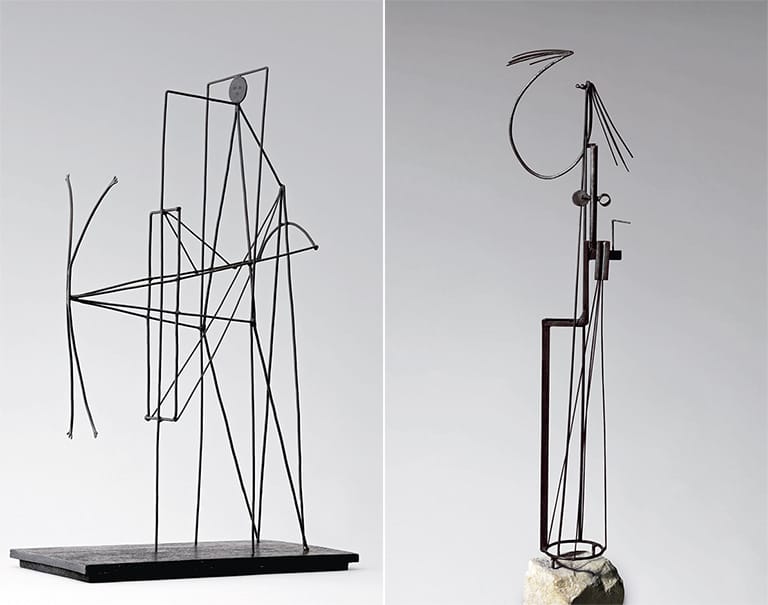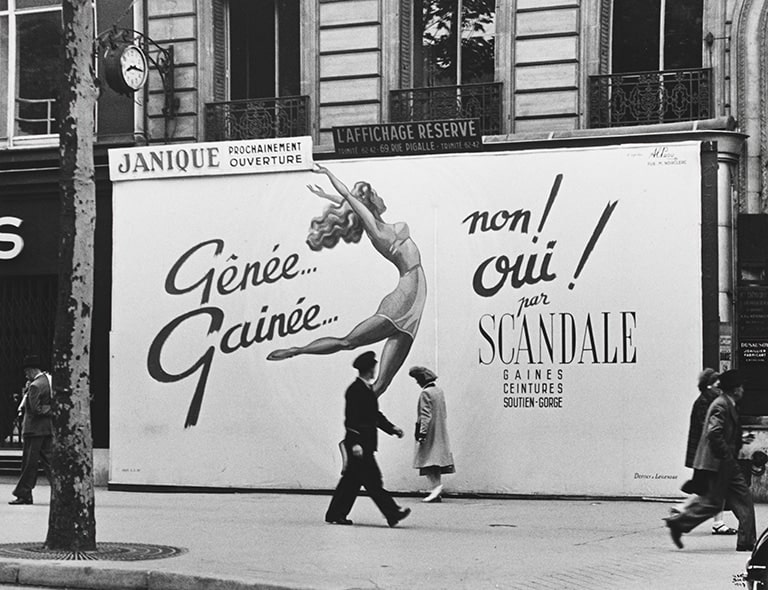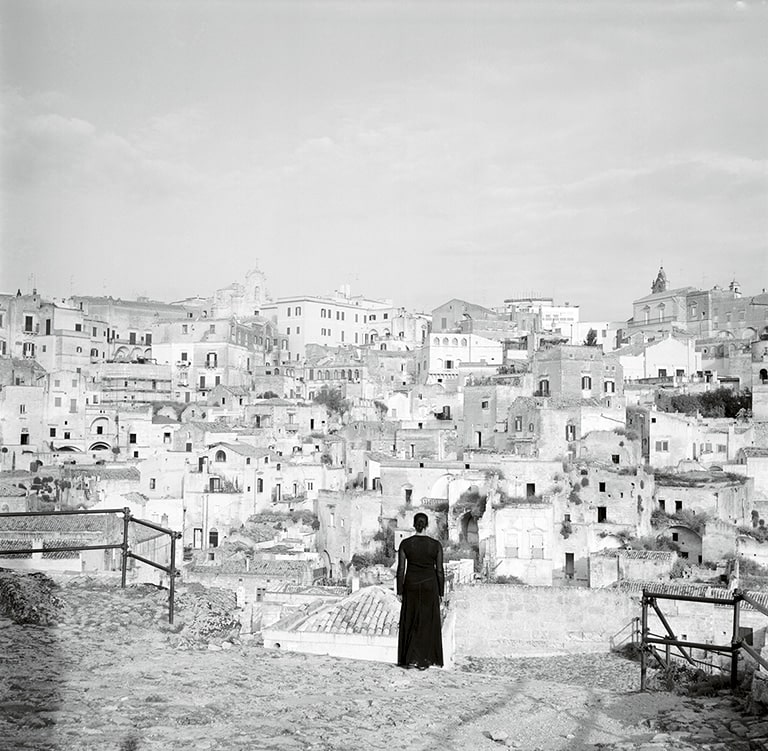Ein Abend in Berlin [An Evening in Berlin]
![Ein Abend in Berlin [Una tarde en Berlín] Ein Abend in Berlin [Una tarde en Berlín] © COLECCIONES Fundación MAPFRE](/media/arte-cultura/colecciones/george-grosz/fm000292.jpg)
George Grosz
Ein Abend in Berlin [An Evening in Berlin], 1929
© George Grosz. VEGAP. Madrid, 2021
© Fundación MAPFRE COLLECTIONS
1929, year 1920 – 1930
Entry date: 2009
Entry date: 2005
Origin: Artist’s studio, Berlin, 1929 / Associated American Artists Inc., New York with the title “Pleasant Evening”/ Sotheby’s New York, auction 4620M, 22 May, 1981, lot 862, with the title “An Evening in Berlin”/ Private collection from 1981 / Galerie Thomas
Technique
Watercolor and Indian ink on laid paper
Dimensions
Printed area: 48.6 x 62.4 cm (19 1/8 x 24 9/16 in.)
Frame size: 74 x 87.5 x 4 cm
Inventory
FM000292
Description
During the Weimar Republic years, George Grosz’s work acquired a radical critical sensibility, especially with regard to the drawings in the albums Das Gesicht der herrschenden Klasse [The Face of the Ruling Class] (1921), Abrechnung folgt! [We Will Settle Accounts!] (1923) and, the most famous of all, Ecce Homo (1923). In all of them he made a scathing, deeply sarcastic criticism of bourgeois society and the capitalist economic system, of militarism and immorality, and of corruption. In the following years – a time of profound political upheaval in Germany and Europe, in which National Socialism and Fascism emerged and developed – Grosz maintained his critical stance.
The representation of everyday life was a constant theme of German artists in the 1920s and 1930s, but none reached the levels of censure achieved by Grosz. His work, especially his drawings, which he regarded as a true “weapon of combat”, combined a strong political intent with knowledge of the classical tradition in tandem with the agitation of Dadaism. Daily life, characters, places, events, and urban landscapes were ennobled in the treatment of motifs according to the guidelines of the so-called “new objectivity”, and distorted with an irony that was sometimes reminiscent of the finest illustrators of the nineteenth century.
Ein Abend in Berlin (An Evening in Berlin) expresses that critical sense and cartoonish tone that was a central characteristic of its artist, but it would be foolish to limit ourselves to seeing a simple and banal caricature in this image. The uneasiness it arouses has its origin in the treatment of the motif, beyond the distortion of the faces and the deliberately-sought comic aspect. The spatial arrangement produces a feeling of oppression due to the layout of the lavishly-decorated inclined planes, which create a space in which objects, furniture, paintings, rugs, curtains, decorative motifs and characters are all crammed together. The festive scene, a dance in a bourgeois venue, is thus transformed into an anguished and brutal scenario: Grosz plays with the size and placement of the figures and, in a fleeting recollection of the cliché of ‘beauty and the beast’, he distorts the figures of the wealthy bourgeois men, and the women as the objects of those men’s desire.
The apparent simplicity of the scene should not detract from the wisdom and skill with which it has been created. The treatment of the female characters, the movement of the curved lines, accentuated in the clingy fabric of the dancer, recalls the German pictorial tradition, and the spatial construction makes one think of Mannerism, which in this drawing takes on an original critical sense. The contrast between the two figures, male and female, sitting on the sofa is very marked, and so is the contrast with the two dancing figures and the presentation of this everyday scene – drinking coffee, smoking and dancing in a domestic setting – and the evident erotic tension. The sexuality is highlighted in the dress that girdles the dancing woman, the claw-like hand of the man who holds her, his gaze, and the equally humorous and malicious gaze of the man sprawled on the sofa.
Four years after he did this drawing, in 1933, Grosz decided to leave Germany. Adolf Hitler’s rise to power had made his existence very precarious, because apart from the critical nature of his work, Grosz, who was a member of the KPD (German Communist Party), had played a significant role in the political confrontations of the 1920s and had even been accused of insulting the armed forces. His art became part of what the National Socialists called “degenerate art” and as such appeared in the exhibitions held under this name. By then, Grosz had emigrated to the United States, obtained US citizenship, and was actively involved in teaching, painting and drawing, although his work had lost its former caustic nature.
[Valeriano Bozal]
BUSSMANN, Georg; SCHNEEDE, Uwe M.: y SCHNEEDE-SCZESNY, Marina. George Grosz: Leben und Werk. Frankfurt am Main: Büchergilde Gutenberg, 1976.
CASANOVA, María y PÉREZ, Carlos. George Grosz: obra gráfica: los años de Berlín. Valencia: IVAM, 1992.
George Grosz, Dessins 1920-1932. París: Galería Tendances, 1995.
George Grosz: Dessins et aquarelles. París : Galería Claude Bernard, 1966.
George Grosz: Handzeichnungen, Aquarelle, 1912-1955. Berlín: Staatliche Museen Preussischer Kulturbesitz, Kupfertichkabinett, Nationalgalerie, 1971.
LEWIS, Beth I. George Grosz: art and politics in the Weimar Republic. Princeton: Princeton University Press, 1991.
SABARSKY, Serge. George Grosz ‘les années berlinoises’: dessins et aquarelles de 1912 à 1931, París : Musée-Galeria de la Seita, 1995.
SCHUSTER, Peter-Klaus, y ADKINS, Helen. George Grosz: Berlin – New York. Berlín: Nationalgalerie, 1994.




